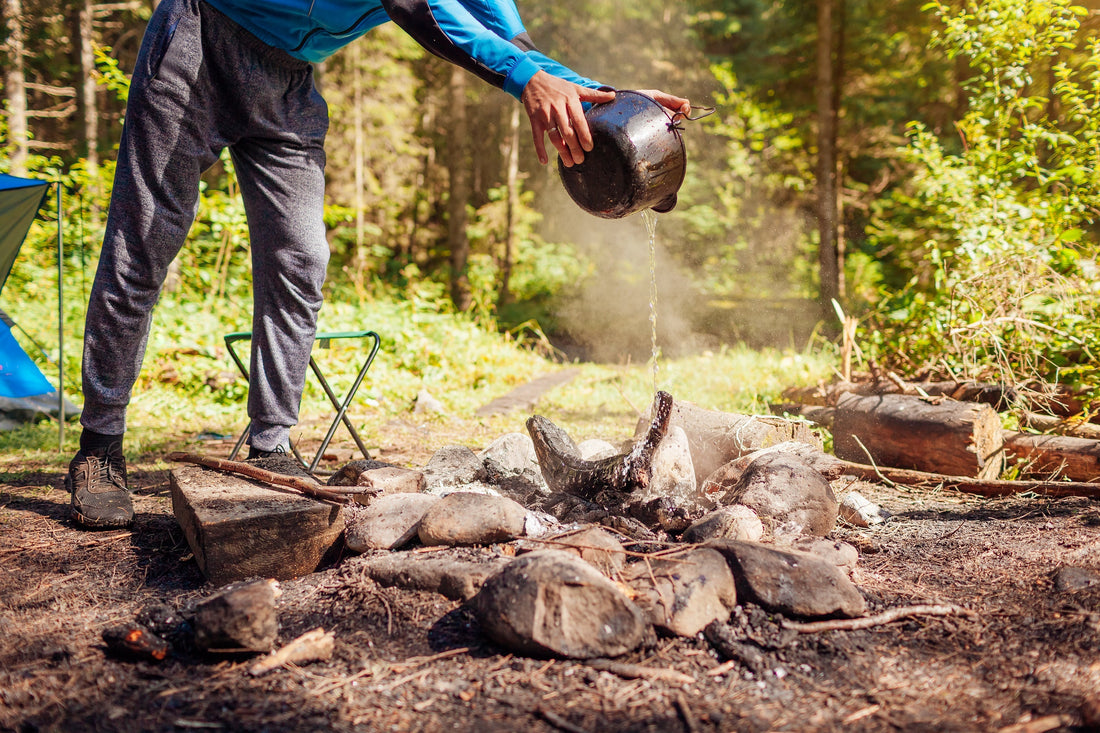
12 Campfire Safety Tips
Share
12 Campfire Safety Tips
Going camping and building campfires are enjoyable activities, so to ensure the most enjoyment possible, it is important to make sure that you are building and maintaining campfires safely.
Shop STOP-FYRE extinguishers now.
According to the National Interagency Fire Center, more than 90% of wildfires are caused by humans. Wildfires are often started by campers who are unable to control campfires, or by people who are smoking and leaving ashes in the woods. In 2021 thus far, there have been 46,925 fires, which left 6,423,804 acres burned. Fire safety is even more critical in states that are in the middle of extreme droughts.
Campfires can provide fuel for cooking and a heat source from the cold, but caution needs to be used in order to make sure that you have a safe camping excursion. Below are tips on how to find a good spot for a campfire, how to maintain the fire, and how to properly put out the fire when you are finished:
1. Check with the park or campground where you are camping to see if you are permitted to build a campfire.
2. Try to find an existing fire pit to build your fire.
3. If no fire pit is found, then you will need to build your own. Make sure that the fire pit is at least 15 feet away from tent walls, shrubs, trees, low hanging branches, and other flammable objects. Also, choose a spot for the fire pit that is downwind.
4. Clear the area around the designated fire pit of any grass, twigs, leaves, and firewood. The fire pit should be dug at least a foot deep. Put larger rocks around the fire pit as a small fire barrier. Have one or two people designated to start and maintain the fire.
5. Make sure that you have a shovel and bucket of water nearby. This will be used when you put out the fire after use.
6. Keep children and pets at a safe distance from the fire pit, even when it is not lit. In most cases where grilling or a fire is concerned, children and pets should be kept at least 3 feet from the active fire. Keep an eye on where the pet or child is at when the fire is lit.
7. Make sure that the matches used to start the fire are completely out before disposing of them. Also, keep matches and lighters in a safe place away from children.
8. Start your fire with small pieces of dry wood. Once you have a strong fire going, add larger dry pieces of wood to keep it burning, while keeping the fire to a manageable size.
9. Never leave a campfire unattended.
10. Only burn wood, dry leaves, grass, or dry needles in the fire. Do not throw the following into the campfire: aerosol cans, pressurized containers, glass, or aluminum cans. Glass does not melt in a fire but can shatter when at high heat for a long period of time. Aluminum cans only break down into smaller pieces and the aluminum dust can be harmful to the lungs. Pressurized containers and aerosol cans can explode causing damaging debris and chemicals to be released.
11. To put out a campfire, it is advised to allow the wood to burn completely to ash if at all possible. If not, then pour lots of water on the fire, drown all the embers until the hissing sounds of the fire stop. Stir the campfire ashes and the water with a shovel to make sure that everything is wet and cold to the touch.
12. Do not bury the fire in the fire pit. The embers could continue to smolder and could catch roots of trees on fire that could then move to the surface starting a wildfire.
Of course, our final tip is to enjoy yourself. Campfires are an excellent way to bring people together, cook food, and stay warm. So, have fun!
Stay safe out there! God bless.
